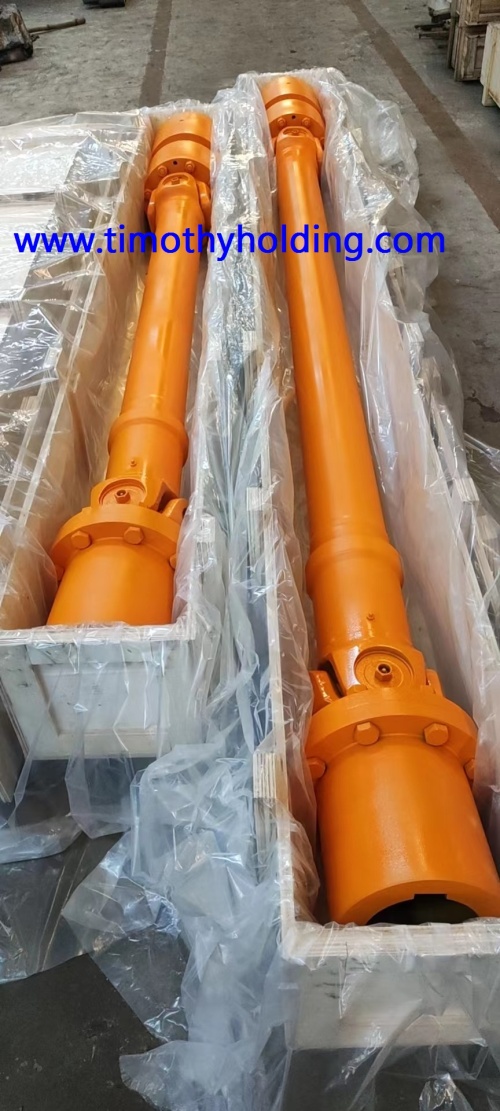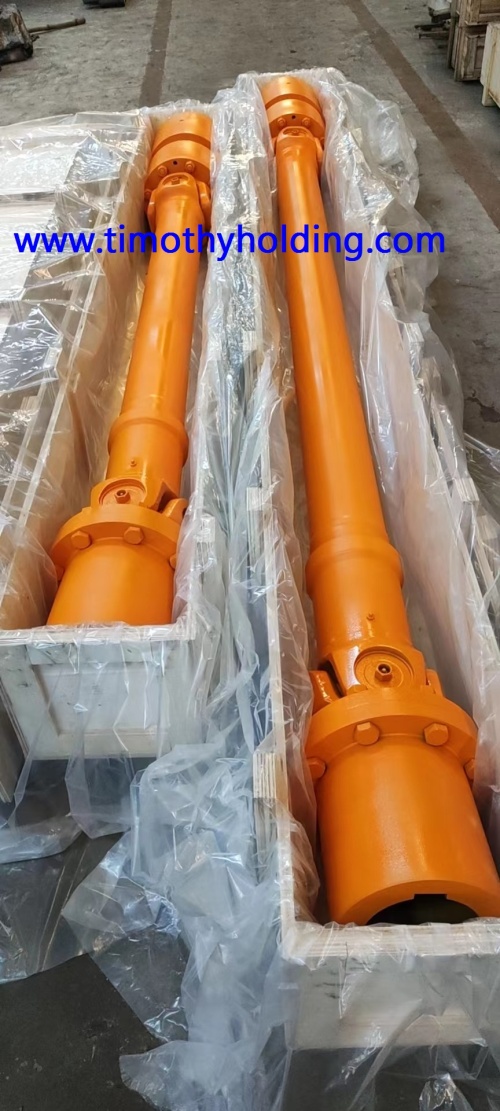
Most Popular
 Cardan drive shaft
Cardan drive shaft
Cardan drive shaft ...
 Cardan Shafts For Continuous Casting Mill
Cardan Shafts For Continuous Casting Mill
Cardan Shafts For Continuous Casting and Rolling MillMaterial:35CrMo and 20CrMnTiSize:SWC225/250/285/315/350/390/440/550/620/780SWP ...
 Cardan joint shaft
Cardan joint shaft
Cardan joint shaft ...


 Industrial cardan shafts , https://www.timothyholding.com
Industrial cardan shafts , https://www.timothyholding.comcardan shaft for paper mills


 cardan shaft for paper mills , https://www.timothyholding.com
cardan shaft for paper mills , https://www.timothyholding.comCardan Shaft For Metallurgical Machinery


 Cardan Shaft For Metallurgical Machinery , http://www.timothyholding.com
Cardan Shaft For Metallurgical Machinery , http://www.timothyholding.comUniversal Joint Shafs For Steel Rolling Mill


 Universal Joint Shafs For Steel Rolling Mill ,https://www.timothyholding.com
Universal Joint Shafs For Steel Rolling Mill ,https://www.timothyholding.comCardan Shafts For Steel Plant ,Rolling Mills


 Cardan Shafts For Steel Plant ,Rolling Mills ,https://www.timothyholding.com
Cardan Shafts For Steel Plant ,Rolling Mills ,https://www.timothyholding.comUniversal joint cross (Universal joint cross.pdf)
Universal joint shaft SWP Series (Universal joint shaft SWP Series.pdf)
Universal joint (Universal joint .pdf)
Cardan shaft SWP Series (Cardan shaft SWP Series.pdf)



Navigating Ironmaking in Modern Steel Production

Navigating Ironmaking in Modern Steel Production
Web:www.timothyholding.com
Steel is a foundational material in modern industry, essential for construction, manufacturing, transportation, and countless other applications. At the heart of steel production lies the intricate process of ironmaking, where iron ore is transformed into molten iron and eventually alloyed to create various grades of steel. This article delves into the journey from ore to alloy, exploring the technologies, challenges, and innovations that shape modern ironmaking.

1. Iron Ore: Source of Steel's Strength
Iron ore, primarily hematite and magnetite, serves as the raw material for ironmaking. Mines worldwide extract these ores, which are then processed to remove impurities and enhance iron content. Advanced beneficiation techniques such as magnetic separation and froth flotation ensure that high-grade iron ore feeds into the ironmaking process, optimizing efficiency and product quality.
cardan drive shaft used in rolling mills.jpg
2. Blast Furnace: Ancient Innovation, Modern Application
The blast furnace stands as a symbol of traditional ironmaking, dating back centuries. In this process, iron ore, coke (a form of carbon), and limestone are fed into the furnace, where intense heat and chemical reactions extract molten iron. Innovations in blast furnace technology, including hot blast systems, oxygen enrichment, and refractory materials, have significantly improved productivity and environmental performance.
3. Direct Reduction: Pioneering Pathways to Iron
Direct reduction technologies offer an alternative route to ironmaking, bypassing the conventional blast furnace. Processes like the Midrex and HYL/Energiron systems utilize natural gas or hydrogen to reduce iron ore pellets or lumps, yielding direct reduced iron (DRI) or sponge iron. These methods, known for their energy efficiency and lower emissions, play a vital role in modern steel production, particularly in regions with abundant natural gas resources.
4. Electric Arc Furnace (EAF): Melting and Mixing
In tandem with blast furnaces and direct reduction plants, electric arc furnaces play a crucial role in steelmaking. Scrap metal, DRI, and other metallic inputs are melted in the EAF using high-powered electric arcs. This process not only recycles steel scrap but also allows for precise alloying and customization, catering to diverse industry needs. Advancements in EAF technology, such as continuous charging systems and process automation, enhance operational flexibility and sustainabilit

5. Alloying: Fine-Tuning Steel's Properties
Alloying transforms molten iron into steel with specific mechanical, chemical, and thermal properties. Alloying elements like carbon, manganese, chromium, and nickel are added in controlled quantities to achieve desired steel grades, ranging from mild to high-strength, corrosion-resistant alloys. Advanced alloy design, facilitated by computational modeling and metallurgical expertise, optimizes steel performance for diverse applications, from automotive components to aerospace structures.
6. Continuous Casting: Shaping the Future of Steel
The final stage of ironmaking involves casting molten steel into semi-finished products like billets, slabs, or blooms. Continuous casting technology revolutionized steel production by enabling continuous, high-speed casting processes. Mold design innovations, electromagnetic stirring, and online quality monitoring ensure uniformity and quality in cast products, supporting downstream processing and reducing material waste.
7. Environmental Considerations: Balancing Progress and Sustainability
Ironmaking and steel production are energy-intensive processes with significant environmental footprints. Industry stakeholders are increasingly focused on mitigating emissions, conserving resources, and adopting cleaner technologies. Initiatives like carbon capture and utilization (CCU), hydrogen-based ironmaking, and circular economy practices (e.g., scrap recycling) are driving sustainability efforts across the iron and steel sector, aligning with global climate goals.
8. Digitalization and Automation: Ironmaking in the Industry 4.0 Era
The integration of digital technologies and automation is reshaping ironmaking operations. From advanced process control systems to predictive maintenance algorithms, digital solutions enhance efficiency, safety, and decision-making in steel plants. Real-time data analytics, coupled with artificial intelligence (AI) and machine learning, optimize process parameters, minimize downtime, and drive continuous improvement in ironmaking processes.

Contact Name:August
Mobile Phone:+86-13758897904
E :[email protected]
www.timothyholding.com